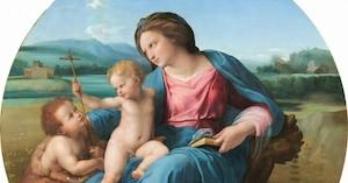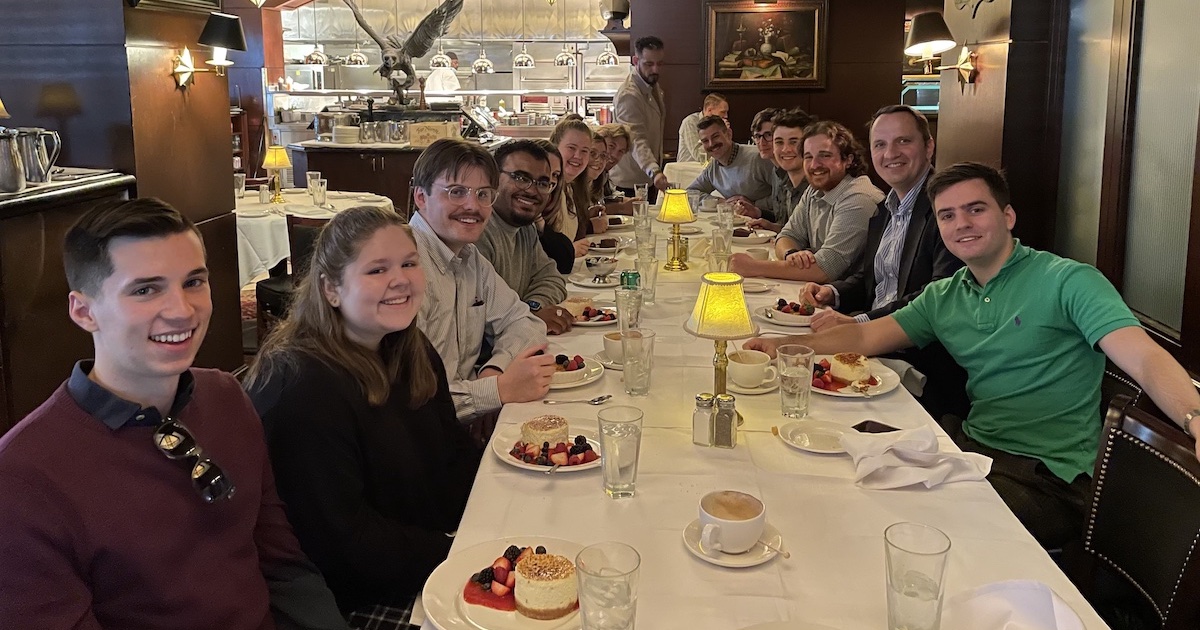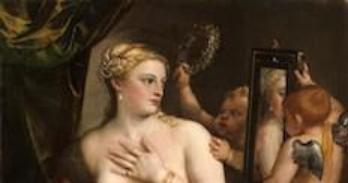Students tour the National Gallery of Art

On Saturday, October 29, 2022, The Carmel Institute organized a trip to the National Gallery of Art. Professor Fedyashin gave the students a 60-minute tour of the paintings acquired by Andrew Mellon from the Hermitage Museum in 1930-31. Of the 21 paintings that Mellon purchased, six are currently on display: Jan van Eyck’s The Annunciation (c. 1434/1436), Sandro Botticelli’s The Adoration of the Magi (c. 1478/1482), Raphael’s Alba Madonna (c. 1510), Titian’s Venus with a Mirror (c. 1555), Paolo Veronese’s The Finding of Moses (c. 1570/1575), and Jean Siméon Chardin’s The House of Cards (c. 1737).
 (click for enlarged view)
(click for enlarged view)
Museum visits, concert attendance, and class-trips have been part of the Carmel Institute’s programming since its inception. As Professor Fedyashin has always reminded his students, although our knowledge about the past depends primarily on reading, history must also be walked, seen, touched, smelled, and tasted. Before coming to the gallery, the group read selections from Selling Russia’s Treasures (2013), including Elena Solomakha’s article “The Destruction of the Hermitage,” an in-depth exploration of the Bolshevik government’s sales to multiple foreign museums and collections. The tour combined the biographies of the artists and the history of Western art. But Dr. Fedyashin also told the students about each painting’s acquisition by the Romanovs. Emperor Alexander I purchased Botticelli’s masterpiece. Emperor Nicholas I purchased van Eyck, Raphael, and Titian. But the most intriguing choices were Catherine the Great’s. The French philosopher Denis Diderot was the most prominent of her agents in Europe. He was directly involved in negotiating the purchase of Veronese’s painting in December of 1777. Veronese presented the famous scene from Exodus as if it took place in Venice—complete with an Italian background and wealthy women wearing the latest Venetian fashion. The Rococo setting would have reflected the splendor of Catherine’s court, although in architecture the more disciplined and austere neoclassical style had already emerged. The Hermitage addition to the Winter Palace that Catherine commissioned not only reflected the new architectural trend, but also pointed to another side of her character—her love for quiet spaces to read and seek shelter from the Imperial Court. Although not a masterpiece on the scale of the other five paintings, Chardin’s canvas with its lone card player on a minimalist background reflected Catherine’s desire for quiet contemplation.
The trip was a visual component of a holistic experience that stays with students of history for much longer. After the tour, the group went to lunch at the Capital Grille. Engaging with the history of art on the page and in the museum helped to open young minds to the importance of art history as well as the great legacy of American philanthropy.


